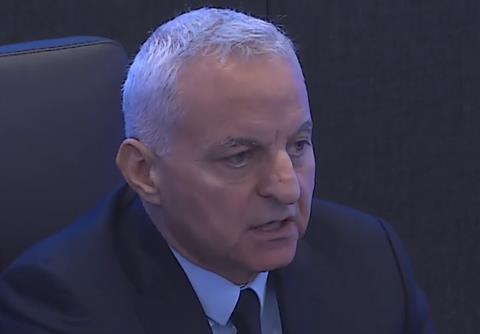Rolls-Royce chief Tufan Erginbilgic expects prolonged supply-chain problems, although he says the company has limited the impact of fires at two suppliers.
The engine manufacturer states that it has built up inventory in order to meet demand in civil aerospace and counter supply-chain disruption.
Speaking during the manufacturer’s half-year briefing on 3 August, Erginbilgic said the “V-shaped” post-pandemic recovery means the civil aerospace and gas turbine supply chain will not stabilise “any time soon”.
He indicated that the situation could persist through next year or even beyond, although he says Rolls-Royce’s power systems division – which has “some overlaps” with civil aerospace – is stabilising because its recovery, in contrast, has been “more like a U-shape”.
The adverse impact of the fires, says Erginbilgic, amounted to £150 million ($190 million).

“Our [supply-chain] issue was a little bit multiplied because of the two supplier fires,” he states.
“We talk about a £150 million impact. But actually the initial impact was going to be a lot more than that, when we analysed [it]. The team has done a great job to minimise the impact.”
Rolls-Royce delivered 188 engines over the first half, of which 115 were for large civil aircraft – among them 18 spares.
These included 66 Trent XWBs for the A350 programme, 35 Trent 7000s for A330neos, and 13 Trent 1000s for the Boeing 787. It also delivered a single Trent 700, the powerplant used on A330s.
The company’s civil aerospace division turned in half-year operating profit of £405 million, on revenues of £3.25 billion.
It says the “significantly improved” performance reflects large-engine market recovery, with higher aftermarket activity, as well as growth in business aviation and the early benefits of transformation efforts.
Rolls-Royce is aiming to deliver 400-500 engines this year, up from last year’s figure of 355.


























